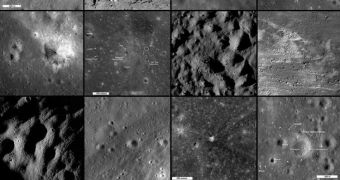Officials at the American space agency announce that the archiving program Planetary Data System (PDS) released yesterday a new series of datasets on the our Moon. The information that were included in the releases were all collected by the seven advanced scientific instruments aboard the NASA Lunar Reconnaissance Orbiter (LRO), currently in orbit around Earth's natural satellite. Being a public-funded project, the PDS is available to everyone and can be viewed here.
“The Planetary Data System is a NASA-funded program to archive data from past and present planetary missions as well as astronomical observations and laboratory data. The purpose of the Planetary Data System is to make available to the public the fruits of NASA funded research and to allow advanced research on solar system science,” says the deputy project scientist for the LRO mission, Dr John Keller. The expert holds an appointment at the Greenbelt, Maryland-based NASA Goddard Space Flight Center. He adds that the new online resource will provide interested members of the general public with new maps and calibrated images of the Moon, all collected by the LRO.
Adds Keller of the spacecraft: “We're able to take advantage of the close proximity of the Moon, compared to other objects in the solar system, to transmit data from LRO back to Earth at a very high rate. The first data release is 55 terabytes. The one year exploration mission will deliver 130 terabytes of data, enabling a more detailed study our nearest celestial neighbor. We expect LRO to provide more data than all of the previous planetary missions combined.” The probe was launched last year alongside the Lunar Crater Observation and Sensing Satellite (LCROSS), which managed to demonstrate once and for all that water-ice exists in ever-shadowed craters at the lunar south pole.
The PDS will mostly include low-level form images that will not be highly processed. One reason for why NASA decided to take this approach is the fact that this provides researchers with more flexibility in dealing with the datasets. Some highly-processed and calibrated images will also be made available to both scientists and the general public. This is not the first information that the LRO collected to be published. Earlier this year, the LROC team published hundreds of Narrow Angle Cameras images, so as to give scientists a head-start before the massive volume of lunar-related information was brought online.

 14 DAY TRIAL //
14 DAY TRIAL //